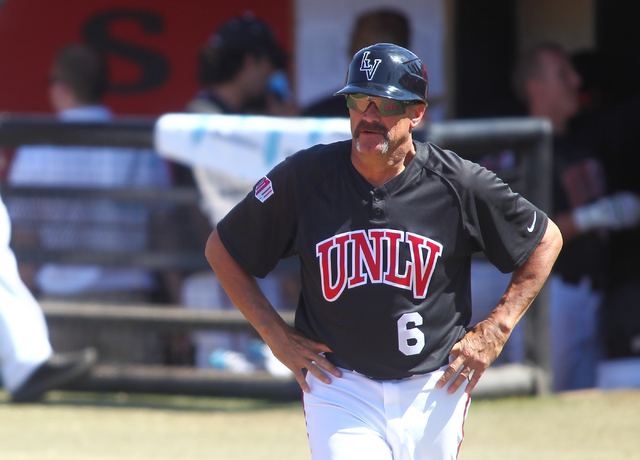Parity propels popularity of college game

The background of a certain college baseball team: It transitioned to Division I status in 1978, failing to win a conference championship or advance to an NCAA regional until budget woes forced the university to cut several sports in 1992.
Baseball got the ax.
The program was then revived in 2000 and began play in a multimillion-dollar, on-campus venue two years later. Since then, it has advanced to eight regionals and appeared in the 2007 College World Series.
On Friday, in a rainy town of not 55,000 souls along the Willamette River in central western Oregon, UC Irvine returns to the postseason when it meets UNLV in a regional game at Oregon State.
The Anteaters offer just one unique story of what has become an annual smorgasbord of tales that leads to the NCAA releasing its baseball tournament bracket each May, a 64-team journey that will conclude with eight programs advancing to the World Series in Omaha, Neb., which begins June 14.
Dallas Baptist is part of this year’s field. So is Sacramento State and Kennesaw State and Campbell and North Dakota State. Cal Poly is one of 16 No. 1 seeds to host a regional. A record 10 teams advanced from the Southeastern Conference, while three programs (Bethune-Cookman, Siena and Youngstown State) made it with losing records.
Translation: Some baseball conference tournaments produce their own version of March Madness, and the SEC is really good at things other than football.
But no matter how each of the 64 built their program — via the benefit of sizable budgets from major football schools or by investing in sports other than the one of helmets and shoulder pads — there is no debating this fact: College baseball is as popular today as ever.
The facilities are astounding, the fan bases electric, the parity obvious throughout the country. It’s one reason ESPN will show action from all 16 regionals this year.
Every pitch. Every game.
Tim Chambers has a theory on why so many programs, many of them hardly household names, have been able to compete for regional berths and a run at the World Series.
For the UNLV coach, it’s all about equipment.
Chambers points to the use of BBCOR bat restrictions and raised seam balls, two factors that have led to fewer home runs and lower-scoring games, perhaps allowing schools that can’t recruit power hitters to win more than they would have before such rules were put in place.
“I don’t want to disrespect anyone, but there are teams that aren’t very good in this thing and there are some really, really good teams not in this year’s tournament,” Chambers said. “But the parity comes from those (equipment rules). It’s a much different game now. There is no scoring. You’re in every game.”
It’s a practical theory.
Here’s another: A school such as Cal State Fullerton, a No. 3 seed in the Oklahoma State regional that has now made 23 straight NCAA appearances and won four national championships, was faced with a decision in the early 1990s.
It could either continue feeding a football beast that never returned a profit or drop the sport and save money at a time when budgets were shrinking, particularly within the Cal State system.
It could either make across-the-board cuts from every sport — salaries, equipment, recruiting, operations — and decimate the entire athletic department or cut one sport and potentially prosper at several others.
Two years after dropping football, the Titans won a national title in baseball.
Within a few years, they had an athletic department budget in the black.
Fullerton and others figured out who they should be athletically and embraced it.
You will find such examples again littered throughout this year’s baseball bracket, programs that discovered their correct niche within a marketplace and thrived.
Cal Poly can make the College World Series. It can win the whole darn thing.
It wouldn’t make the Final Four in basketball. Wouldn’t wear Cinderella’s slipper in that sport. Wouldn’t have a chance.
That’s one reason — the fact so many teams own a legitimate shot at a championship, that a school such as Fresno State can win it all as a No. 4 seed in 2008 — for the increased interest in college baseball, why 1.4 million viewers on average watched games from Omaha on ESPN last year.
“You never know what’s going to happen,” Chambers said. “We’re going to go play and see. We’re super excited to make a regional for the first time in nine years. It’s a neat deal.”
It’s as popular as it has ever been.
With a smorgasbord of tales again defining 16 regional sites.
Las Vegas Review-Journal sports columnist Ed Graney can be reached at egraney@reviewjournal.com or 702-383-4618. He can be heard from 11 a.m. to 2 p.m. Monday through Friday on “Gridlock,” ESPN 1100 and 98.9 FM. Follow him on Twitter: @edgraney.